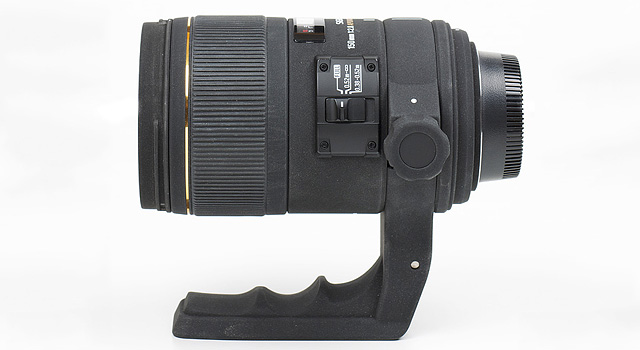|
Page 1 of 3

Review by Markus Stamm, published May 2011
Introduction
Macro lenses can be categorized in three classic focal length groups: around 50/60 mm, where they can also act as a normal prime, short tele lenses in the range of 90 or 100mm, often also used for portraiture and long 180mm primes, which allow for larger working distances, but come with smaller maximum apertures (usually f/3.5) and are often rather large and additionally troubled by slow AF, which renders them less attractive for usages other than macro photography compared to their shorter cousins.
By choosing a focal length of 150mm Sigma is able to combine the best aspects of two segments into a single lens. While offering a similarly large working distance as 180mm macro primes, the lens nonetheless offers a large f/2.8 aperture, all packaged in a product only slightly larger (but quite a bit heavier) than the shorter 100mm macro lenses. Thanks to a fast HSM drive the lens is not only an attractive option for macro photographers, but also doubles nicely as a general purpose fast tele prime, equally useful for portaiture or sports and action photography.
At the time of this review (May 2011) a successor with Sigma's optical stabilization technology has already been announced, however the non-stabilized lens is not yet discontinued officially and still available new.

The build quality of the Sigma lens is excellent. It is a member of Sigma's professional grade "EX" (excellence) lineup and features the crinkle style finish that was typical for EX lenses for many years, but unfortunately has a tendency to easily collect dust and dirt. Newer Sigma EX lenses now feature a rubber like coating instead, that handles this issue a lot better.
The broad, rubberized focus ring operates very smooth. The lens does not extend during focusing nor does the front element rotate. Using a polarizer is therefore no problem, at least as long as the rather large hood is not mounted, which makes it difficult to reach and adjust a front filter.

For a macro lens the speed of the near-silent HSM ("Hypersonic Motor") AF drive is very decent but naturally a bit compromised due to the very long focus path - it simply takes some time to AF between the extreme ends of the focus range. In order to prevent long range hunting in standard situations Sigma has implemented a focus limiter where you can choose between full-range, 0.52m-infinity and 0.38-0.52m. This set makes sense because the focus path from 0.38-0.52m is about as long as between 0.52m-infinity. Limited accordingly, AF action is actually quite fast.
Thanks to the HSM AF drive manual focusing is always possible in single-shot AF mode.

The lens comes with a removable tripod collar included. In addition, it is compatible with the optional and larger (and somewhat expensive) Sigma TS-41 collar, that offers an increased distance from lens body to mount plate. That additional space makes the setup more comfortable to handhold and carry (also due to the grip's shape) and can also give enough clearance to use the lens with large cameras (or a DSLR with additional battery grip) on some ballheads, on which otherwise the camery body could collide with the head's controls when rotated. On the other hand, the larger collar of course needs a lot more space in your camera bag.
The lens is compatible with both current Sigma APO DG tele converters, but only offers AF with the 1.4 converter. With the 2.0x converter attached, Nikon DSLRs won't autofocus anymore, even though on paper the setup is still fast enough in terms of aperture. For macro photography, which is usually done with manual focus anyway, this is hardly an issue, but "regular" photography is quite cumbersome with manual focus and such a rather long focal length. For this reason, we did not include the 2.0x tele converter in our formal testing.
The Sigma AF 150mm f/2.8 EX DG HSM APO is a G-type lens and thus does not offer an aperture ring.
| Specifications |
|---|
| Optical construction | 16 elements in 12 groups inc. 2 SLD elements |
| Number of aperture blades | 9 (circular) |
| min. focus distance | 0.38 m (max. magnification ratio 1:1) |
| Dimensions | 80 x 137 mm |
| Weight | 895 g |
| Filter size | 72 mm (non-rotating) |
| Hood | barrel-shaped, bayonet mount, supplied |
| Other features | Lens provides distance (D) information to the camera, Hyper-Sonic motor, tripod collar |
|